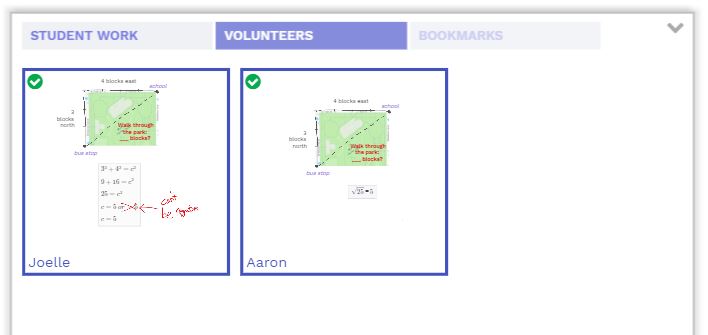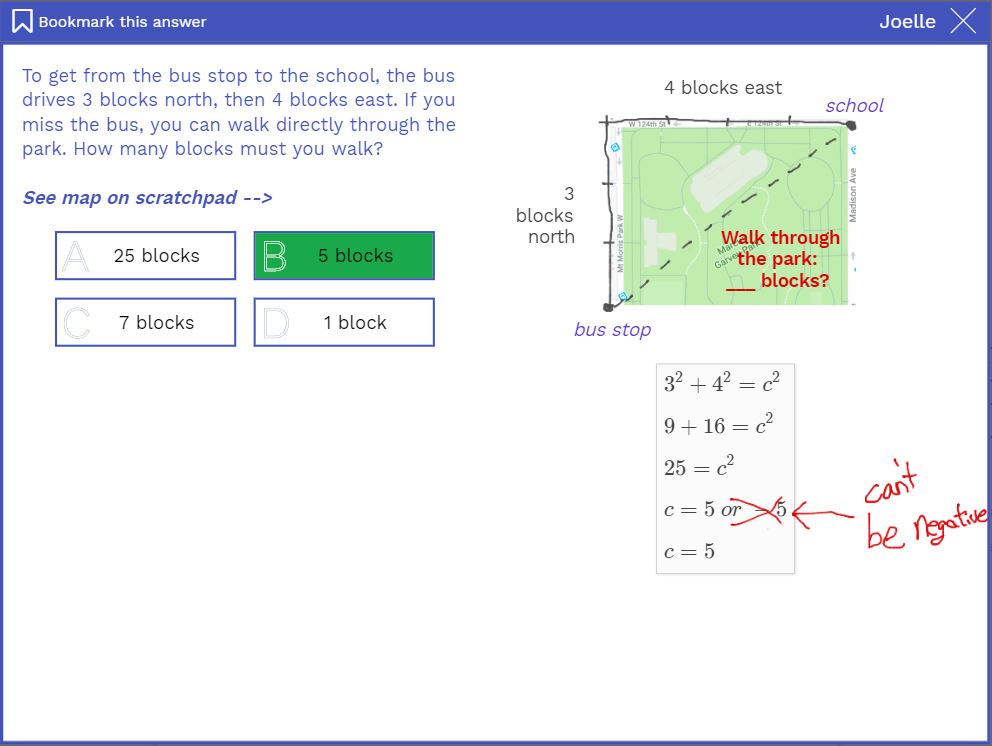New Feature: Active Learning Through Student Volunteers
- By Woot Math
- January 9, 2019
- 5:43 pm
- No Comments
Ask for Volunteers
Student work is always saved when running a formative assessment. After students complete the task, in teacher-led mode teachers can review examples of anonymous student work in real-time with the class. Now, the teacher can also ask for volunteers by clicking on the volunteers tab. Once they do, students can now volunteer to share their work with the class.

– Students Can Volunteer to Show Their Work –
Select High Quality Student Work
Once students have volunteered, the teacher sees tiles from each of the student volunteers. The teacher can then determine which student volunteer they want to project by simply clicking on the tile.

– Teacher Sees Work From Student Volunteers –
For this problem, Joelle and Aaron have volunteered their solutions. The green check box indicates that they both have the correct answer. The teacher can turn off revealing the correct answer by deselecting “reveal answer”. Sometimes it is helpful to project student work without the answer revealed – students can then use critical thinking and analytical skills when they have to justify their responses before being told if they are correct.
Promote Active Learning: Have Students Present Their Work

– Projected Volunteer Student's Worked Solution –
We see that Joelle has used the Pythagorean Theorem to solve the question. She also remembered to find the positive and negative solutions to 25=c². This attention to detail makes it a great opportunity for active learning. Joelle can present her thinking to the class while other students can learn from her example. Of course, the teacher can also use this feature to present students’ work on their behalf.
This is a great feature to try out if you are looking to get your students more engaged in active learning. You can also use this feature to encourage students to take risks. Reassure them that it is good to share their thinking, even if they aren’t 100% correct yet.
We recommend you check out the Pythagoras’ Park activity as a review of they Pythagorean Theorem. It would also work well as a quick refresher for students who have already learned it! Previewing the activity now using the link below. Or, login to wootmath.com and search for “Pythagoras” in the Shared Gallery.
Visit our page on Formative Assessment for more on how to use this free tool in your classroom.


